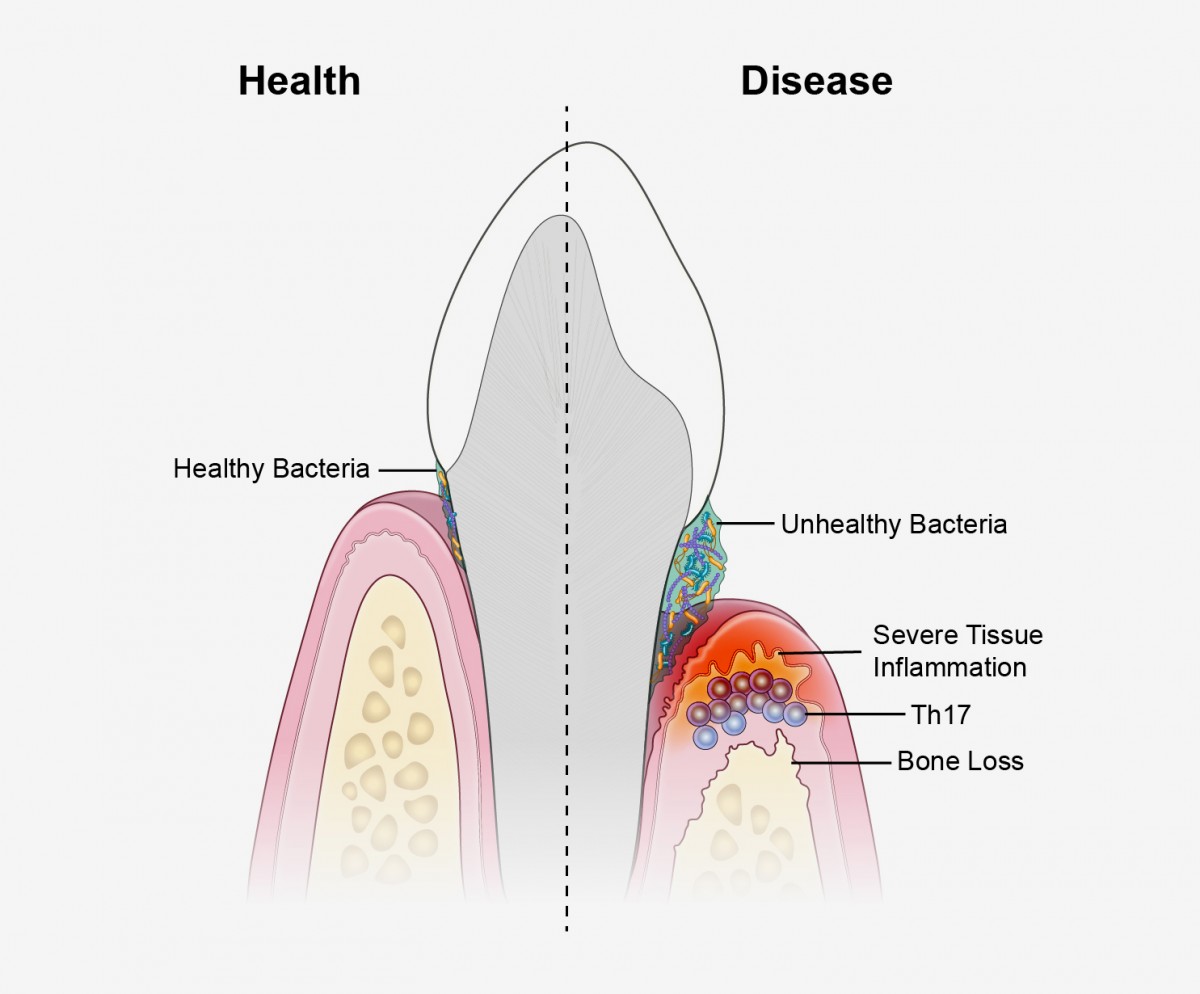Researchers identify immune culprits linked to inflammation and bone loss in gum disease
Microbiome-triggered Th17 cells switch from protective to destructive; may be potential treatment targets
An unhealthy population of microbes in the mouth triggers specialized immune cells that inflame and destroy tissues, leading to the type of bone loss associated with a severe form of gum disease, according to a new study in mice and humans. The research, led by scientists from the National Institute of Dental and Craniofacial Research (NIDCR) at the National Institutes of Health and the University of Pennsylvania School of Dental Medicine, Philadelphia, could have implications for new treatment approaches for the condition. The findings appear online Oct. 17, 2018, in Science Translational Medicine.
Periodontal disease is a common disorder that affects nearly half of American adults over age 30, and 70 percent of adults 65 and older. In those affected, bacteria trigger inflammation of the tissues that surround the teeth, which can lead to loss of bone and teeth in an advanced stage of the disease called periodontitis.
“We’ve known for years that microbes stimulate inflammation. Removing bacteria by tooth-brushing and dental care controls inflammation, but not permanently, suggesting there are other factors at play,” said study senior author Niki Moutsopoulos, D.D.S., Ph.D., a clinical investigator at NIDCR. “Our results suggest that immune cells known as T helper 17 cells are drivers of this process, providing the link between oral bacteria and inflammation.”

A new study suggests that periodontal disease is driven by Th17 immune cells, which are triggered by an unhealthy bacterial community.
This page was last updated on Friday, January 21, 2022